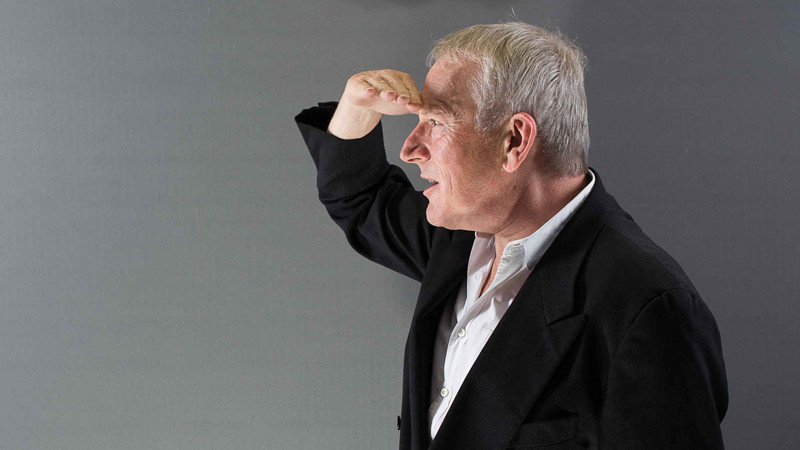Design and Quality
 First published by The Chartered Quality Institute, February 2015
First published by The Chartered Quality Institute, February 2015Years ago, I used to interview some of the world’s top product and graphic designers. When he was visiting England late in life, I caught Raymond Loewy, the man who designed the Gestetner duplicator and the Greyhound bus. In his studio on Sunset Boulevard, Los Angeles, I talked to Saul Bass, who invented the film title and laid it on the line in the opening credit sequences to North by Northwest (1959) and Psycho (1960). Back in London, I also questioned Dieter Rams, the man who gave Germany’s Braun its post-war shavers and its stereograms.
None of them ever talked quality
Although most of my work now concerns the future of technological innovation, I still work with designers. Naturally, as in the world of quality professionals, both the practice and the vocabulary of design have changed. Instead of product and graphic design, professional designers talk and do product, interaction and communication design. There is a strong environmentalist ethos, an emphasis on users, user testing and usability, a heavy orientation to IT, and a growing rhetoric of design for services.
Yet still the design profession very rarely talks about quality. It rarely evaluates its work, being too avid to begin the next project.
One can understand that. Design can be a profitable business, but in the product side of it, at least, margins are low.
There is a sin, however, much less forgivable than being in a hurry. For the fact is that a legion of design boosters and cultural critics, unfamiliar with the realities of, say, 3D printing, now likes to show its hipness by suggesting that technology, and in particular IT, has solved most of the functional difficulties that beset products – and even, potentially those that attend services. In this diagnosis, design need now only concern itself with users, the environment, branding and aesthetics. The basic engineering problems around systems have largely been solved. We’re supposed to be in a world where brains, creativity, customisation and different forms of play – by the designer, the engineer and the consumer – are the key dynamics, not down-home performance.
I don’t believe that. So I was struck to see David Hutchins note (QW, December, p4) that, in the car industry, he expects ‘a steady rise in product recalls worldwide’. Recall of defective vehicles has certainly been the pattern in recent years – with even Toyota, the pioneer of quality, failing to pass muster on several occasions. One wouldn’t wish the pattern to continue, but the suspicion must be that it will.
In services, after all, quality problems are mounting. If you don’t believe me, try to leave an airport on time, or to get utilities and a TV easily installed when moving house. Yet if services, the chief business of the West, turn in a sloppy game, a culture of slip-ups in manufacturing can all too easily follow.
No, the great designers of the 20th century never talked quality much. In 2015, though, those concerned about quality might do well to open a dialogue with designers. Their prestige, and their influence, has never been greater.
I will be speaking at the Chartered Quality Institute Conference this April – book your place today.
@jameswoudhuysen I use my bicycle every day. Exercise and access to shopping without any parking meters and all that fuzz. But alfa-cyclists are the worst. They are competing at 40 mph and always acting rudely to get where they are going.
A PRO-CAR CYCLIST WRITES: 12-1pm tomorrow on #R4, will be talking bikes, cars, pedestrians, public transport – and #JeremyVine
Stimulating piece on the #CrisisOfCustomerService by clever @ClaerB @FT.
All that Clinton-era #CustomerExperience guff was always for the birds - certainly compared with, er, price.
The new thang? Often there is NO service - and thus no #CX!
Articles grouped by Tag
Bookmarks
Innovators I like

Robert Furchgott – discovered that nitric oxide transmits signals within the human body

Barry Marshall – showed that the bacterium Helicobacter pylori is the cause of most peptic ulcers, reversing decades of medical doctrine holding that ulcers were caused by stress, spicy foods, and too much acid

N Joseph Woodland – co-inventor of the barcode

Jocelyn Bell Burnell – she discovered the first radio pulsars

John Tyndall – the man who worked out why the sky was blue

Rosalind Franklin co-discovered the structure of DNA, with Crick and Watson

Rosalyn Sussman Yallow – development of radioimmunoassay (RIA), a method of quantifying minute amounts of biological substances in the body

Jonas Salk – discovery and development of the first successful polio vaccine

John Waterlow – discovered that lack of body potassium causes altitude sickness. First experiment: on himself

Werner Forssmann – the first man to insert a catheter into a human heart: his own

Bruce Bayer – scientist with Kodak whose invention of a colour filter array enabled digital imaging sensors to capture colour

Yuri Gagarin – first man in space. My piece of fandom: http://www.spiked-online.com/newsite/article/10421

Sir Godfrey Hounsfield – inventor, with Robert Ledley, of the CAT scanner

Martin Cooper – inventor of the mobile phone

George Devol – 'father of robotics’ who helped to revolutionise carmaking

Eugene Polley – TV remote controls

Thomas Tuohy – Windscale manager who doused the flames of the 1957 fire



0 comments